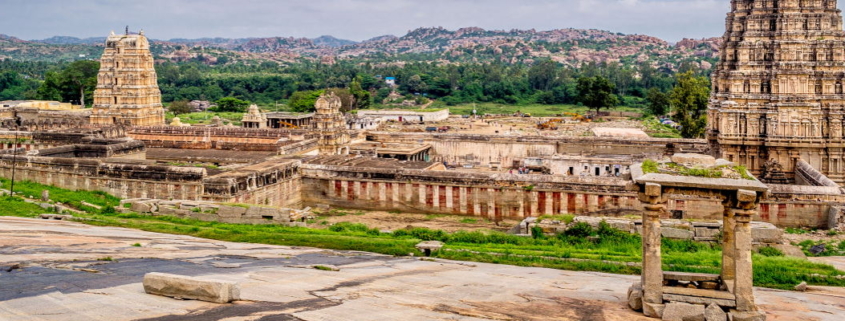Vijayanagara
The austere and grandiose site of Hampi comprise mainly the remnants of the capital city of Vijayanagara (14th-16th CE), the last great Hindu Empire. Hampi’s spectacular setting is dominated by River Tungabhadra, craggy hill ranges and open plains, with widespread physical remains.
Suburban townships (puras) surrounded the large Dravidian temple complexes containing subsidiary shrines, bazaars, residential areas and tanks applying the unique hydraulic technologies and skilfully and harmoniously integrating the town and defense architecture with surrounding landscape. The remains unearthed in the site delineate both the extent of the economic prosperity and political status that once existed indicating a highly developed society.
Dravidian architecture flourished under the Vijayanagara Empire and its ultimate form is characterised by their massive dimensions, cloistered enclosures, and lofty towers over the entrances encased by decorated pillars. The highly developed and extremely sophisticated settlement articulates architectural manifestations, agricultural activities, irrigation systems, formal and informal paths, boulders and rocks, religious and social expressions.



